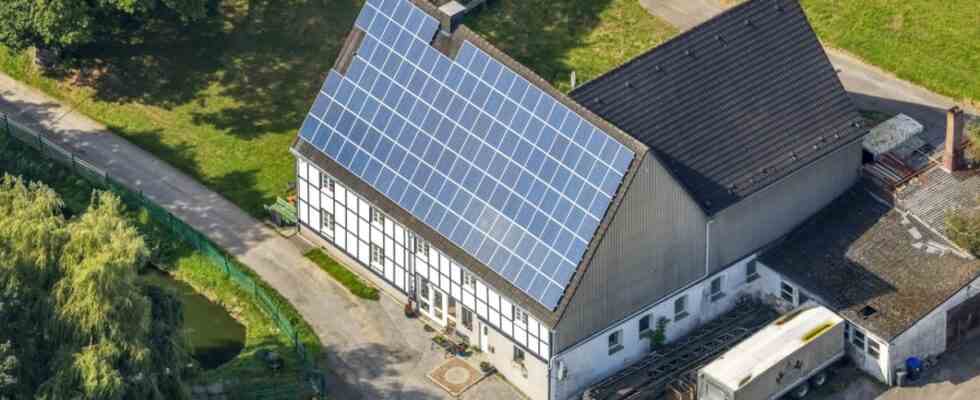Relying on solar power as a homeowner has become more attractive in recent years. Oil and gas prices have risen sharply, and electricity has also become more expensive. The prices for solar modules, on the other hand, have fallen, with them it is much cheaper to generate electricity yourself than to buy it from the supplier – you are also making a contribution to climate protection and independence from authoritarian rulers of oil and gas such as Russia’s President Vladimir Putin.
But how big is the potential that Germany’s private houses offer for solar power? This has now been determined by the solar power provider Lichtblick together with the Bonn research and consulting company EUPD Research for one- and two-family houses. The investigation will be presented next Tuesday and is due Süddeutsche Zeitung before. Accordingly, there are many more possibilities on the homes than have been used up to now. According to the authors, 10.8 million private houses are suitable for solar power if the potential were exhausted, they would generate as much electricity per year as ten medium-sized coal-fired power plants. Economics Minister Robert Habeck (Greens) announced this week that he would put more coal-fired power plants into operation so that gas can be saved in power generation.
The study sees seven key technologies for the energy transition in the home. Solar power systems are the most widespread, they are installed on at least 16 percent of suitable houses, and the solar power is then often fed into the grid. However, harnessing the solar power generated in one’s own home is less common, namely for heat pumps (eight percent of homes), car charging stations (eight), home storage (four), electric cars (three), smart meters (three) and energy consumption management systems (two Percent). If you take all these options together, the possibilities are only used to a tenth. According to the EUPD, around 131 billion euros would have to be invested in order to make full use of them. The idea behind an expansion is that homeowners are both producers and consumers of electricity.
Homeowners could save a lot of money
If all 10.8 million households were to switch from the previously widespread oil and gas boilers and petrol and diesel cars to electric heating and electromobility, their energy requirements would fall by two thirds. According to a model calculation of the study, homeowners can save up to 55,000 euros over 20 years, if the solar power is marketed on the exchange when energy prices are high, up to 95,000 euros could be earned. The digitization and networking of solar systems, storage systems, heat pumps and electric cars could make the systems more economical and the houses largely self-sufficient. One of the main problems of using solar power is storing the energy for the time when there is not enough sun. According to Lichtblick, this could be solved with additional large-scale storage and the use of e-car batteries.
So why aren’t more solar power systems being installed? The study sees an important reason in the mass of bureaucracy that private individuals have to fight their way through. There are regulations for connecting the solar system to the public electricity grid and for measuring the electricity that is consumed and fed into the grid. “There are 900 network operators, and they can all determine their own technical connection conditions,” says Ralf Schmidt-Pleschka from Lichtblick. A lot of people have their own ideas about how this should happen. “That’s why we’re calling for uniform connection conditions nationwide.”
Lichtblick itself offers green electricity and the installation of solar systems on private roofs. However, the assessment of the potential for solar systems on private homes is “plausible,” says Harry Wirth, who heads the Photovoltaics, Modules and Power Plants department at the Fraunhofer Institute for Solar Energy Systems (ISE) in Freiburg. His institute has calculated the solar potential for all German roofs. Result: You could use it to produce as much electricity as 23 large coal-fired power plants. In the case of single and two-family houses, this can usually be used more quickly than, for example, in the case of rented or multi-family houses, where complicated regulations are often necessary, says Wirth.
Relying solely on the sun, Wirth sees problems for a reliable power supply. “The batteries alone are not enough for storage, they are empty after a few hours.” Wind power can at least partially compensate for this, and in the future it will also be necessary to store the electricity in the form of hydrogen. Nevertheless, there is still a big advantage for solar power from the house roof: “You get electricity at a safe price – and that’s worth a lot with strongly fluctuating energy prices.”

